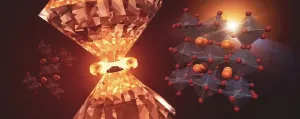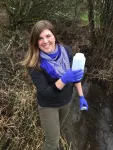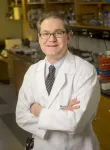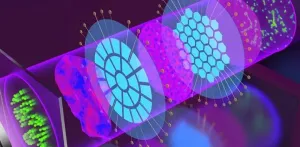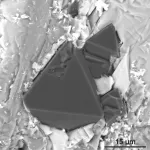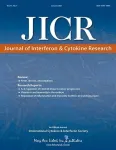When a story is breaking, AI can help consumers identify fake news
Early intervention with tailored messaging may stop the spread of misinformation
2021-01-21
(Press-News.org) TROY, N.Y. -- Warnings about misinformation are now regularly posted on Twitter, Facebook, and other social media platforms, but not all of these cautions are created equal. New research from Rensselaer Polytechnic Institute shows that artificial intelligence can help form accurate news assessments -- but only when a news story is first emerging.
These findings were recently published in Computers in Human Behavior Reports by an interdisciplinary team of Rensselaer researchers. They found that AI-driven interventions are generally ineffective when used to flag issues with stories on frequently covered topics about which people have established beliefs, such as climate change and vaccinations.
However, when a topic is so new that people have not had time to form an opinion, tailored AI-generated advice can lead readers to make better judgments regarding the legitimacy of news articles. The guidance is most effective when it provides reasoning that aligns with a person's natural thought process, such as an evaluation of the accuracy of facts provided or the reliability of the news source.
For more information on how AI can counter fake news, watch this video.
"It's not enough to build a good tool that will accurately determine if a news story is fake," said Dorit Nevo, an associate professor in the Lally School of Management at Rensselaer and one of the lead authors of this paper. "People actually have to believe the explanation and advice the AI gives them, which is why we are looking at tailoring the advice to specific heuristics. If we can get to people early on when the story breaks and use specific rationales to explain why the AI is making the judgment, they're more likely to accept the advice."
This two-part study, which involved nearly 800 participants, began in late 2019. The nearly simultaneous onset of the COVID-19 pandemic offered the researchers an opportunity to collect real-time data on a major emerging news event.
"Our work with coronavirus news shows that these findings have real-life implications for practitioners," Nevo said. "If you want to stop fake news, start right away with messaging that is reasoned and direct. Don't wait for opinions to form."
INFORMATION:
This research paper, "Tailoring Heuristics and Timing AI Interventions for Supporting News Veracity Assessments," is an example of the New Polytechnic, the collaborative model that encourages partnership and cooperation across disciplines in research and education at Rensselaer. In addition to Nevo, the team at Rensselaer included Lydia Manikonda, an assistant professor at the Lally School of Management; Sibel Adali, a professor and associate dean in the School of Science; and Clare Arrington, a doctoral student of computer science. The other lead author was Benjamin D. Horne, a Rensselaer alumnus and assistant professor at the University of Tennessee.
About Rensselaer Polytechnic Institute
Founded in 1824, Rensselaer Polytechnic Institute is America's first technological research university. Rensselaer encompasses five schools, 32 research centers, more than 145 academic programs, and a dynamic community made up of more than 7,600 students and over 100,000 living alumni. Rensselaer faculty and alumni include more than 145 National Academy members, six members of the National Inventors Hall of Fame, six National Medal of Technology winners, five National Medal of Science winners, and a Nobel Prize winner in Physics. With nearly 200 years of experience advancing scientific and technological knowledge, Rensselaer remains focused on addressing global challenges with a spirit of ingenuity and collaboration. To learn more, please visit http://www.rpi.edu.
ELSE PRESS RELEASES FROM THIS DATE:
2021-01-21
Among the materials known as perovskites, one of the most exciting is a material that can convert sunlight to electricity as efficiently as today's commercial silicon solar cells and has the potential for being much cheaper and easier to manufacture.
There's just one problem: Of the four possible atomic configurations, or phases, this material can take, three are efficient but unstable at room temperature and in ordinary environments, and they quickly revert to the fourth phase, which is completely useless for solar applications.
Now scientists at Stanford ...
2021-01-21
Delivering a minor electric shock into a stream to reveal any fish lurking nearby may be the gold standard for detecting fish populations, but it's not much fun for the trout.
Scientists at Oregon State University have found that sampling stream water for evidence of the presence of various species using environmental DNA, known as eDNA, can be more accurate than electrofishing, without disrupting the fish.
"It's revolutionizing the way we do fish ecology work," said Brooke Penaluna, a research fish biologist with the U.S. Department of Agriculture Forest Service who also has an appointment in OSU's Department ...
2021-01-21
If you believe you are capable of becoming the healthy, engaged person you want to be in old age, you are much more likely to experience that outcome, a recent Oregon State University study shows.
"How we think about who we're going to be in old age is very predictive of exactly how we will be," said Shelbie Turner, a doctoral student in OSU's College of Public Health and Human Sciences and co-author on the study.
Previous studies on aging have found that how people thought about themselves at age 50 predicted a wide range of future health outcomes up to 40 years later -- cardiovascular events, memory, balance, will to live, hospitalizations; even mortality.
"Previous ...
2021-01-21
BIRMINGHAM, Ala. - A 72-year-old woman was hospitalized with severe COVID-19 disease, 33 days after the onset of symptoms. She was suffering a prolonged deteriorating illness, with severe pneumonia and a high risk of death, and she was unable to mount her own immune defense against the SARS-CoV-2 virus because of chronic lymphocytic leukemia, which compromises normal immunoglobulin production.
But when physicians at the University of Alabama at Birmingham recommended a single intravenous infusion of convalescent blood plasma from her son-in-law -- who had recovered from COVID-19 disease ...
2021-01-21
Microscopy is the workhorse of contemporary life science research, enabling morphological and chemical inspection of living tissue with ever-increasing spatial and temporal resolution. Even though modern microscopes are genuine marvels of engineering, minute deviations from ideal imaging conditions will still lead to optical aberrations that rapidly degrade imaging quality. A mismatch between the refractive indices of the sample and its immersion medium, deviations in the thickness of sample holders or cover glasses, the effects of aging on the instrument--such deviations ...
2021-01-21
Contemporary robots can move quickly. "The motors are fast, and they're powerful," says Sabrina Neuman.
Yet in complex situations, like interactions with people, robots often don't move quickly. "The hang up is what's going on in the robot's head," she adds.
Perceiving stimuli and calculating a response takes a "boatload of computation," which limits reaction time, says Neuman, who recently graduated with a PhD from the MIT Computer Science and Artificial Intelligence Laboratory (CSAIL). Neuman has found a way to fight this mismatch between a robot's "mind" and body. The method, called robomorphic computing, uses a robot's physical layout and intended applications ...
2021-01-21
BOSTON - Regular aspirin use has clear benefits in reducing colorectal cancer incidence among middle-aged adults, but also comes with some risk, such as gastrointestinal bleeding. And when should adults start taking regular aspirin and for how long?
There is substantial evidence that a daily aspirin can reduce risk of colorectal cancer in adults up to age 70. But until now there was little evidence about whether older adults should start taking aspirin.
A team of scientists set out to study this question. They were led by Andrew T. Chan MD, MPH, a gastroenterologist and chief of the Clinical and Translational Epidemiology Unit at ...
2021-01-21
Diamond, like graphite, is a special form of carbon. Its cubic crystal structure and its strong chemical bonds give it its unique hardness. For thousands of years, it has also been sought after as both a tool and as a thing of beauty. Only in the 1950s did it become possible to produce diamonds artificially for the first time.
Most natural diamonds form in the Earth's mantle at depths of at least 150 kilometres, where temperatures in excess of 1500 degrees Celsius and enormously high pressures of several gigapascals prevail - more than 10.000 times that of a well-inflated bicycle tyre. There are different theories for the exact mechanisms ...
2021-01-21
The liquid electrolytes in flow batteries provide a bridge to help carry electrons into electrodes, and that changes how chemical engineers think about efficiency.
The way to boost electron transfer in grid-scale batteries is different than researchers had believed, a new study from the University of Michigan has shown.
The findings are a step toward being able to store renewable energy more efficiently.
As governments and utilities around the world roll out intermittent renewable energy sources such as wind and solar, we remain reliant on coal, natural gas and nuclear power plants to provide energy when the wind isn't blowing and the sun isn't shining. Grid-scale "flow" batteries are one proposed solution, storing energy for later use. But because they aren't very efficient, ...
2021-01-21
New Rochelle, NY, January 20, 2020--SARS-CoV-2, the virus that causes COVID-19, blocks the processes of innate immune activation that normally direct the production and/or signaling of type I interferon (IFN-I) by the infected cell and tissues. IFN-I is a key component of host innate immunity that is responsible for eliminating the virus at the early stage of infection, as summarized in a recent review article in Journal of Interferon & Cytokine Research (JICR). By suppressing innate immunity, the virus replicates and spreads in the body unchecked, leading to the disease known as COVID-19. Click here to read the article now.
"SARS-CoV-2 utilizes various approaches to evade host IFN-I response, including suppression of IFN-I ...
LAST 30 PRESS RELEASES:
[Press-News.org] When a story is breaking, AI can help consumers identify fake news
Early intervention with tailored messaging may stop the spread of misinformation
